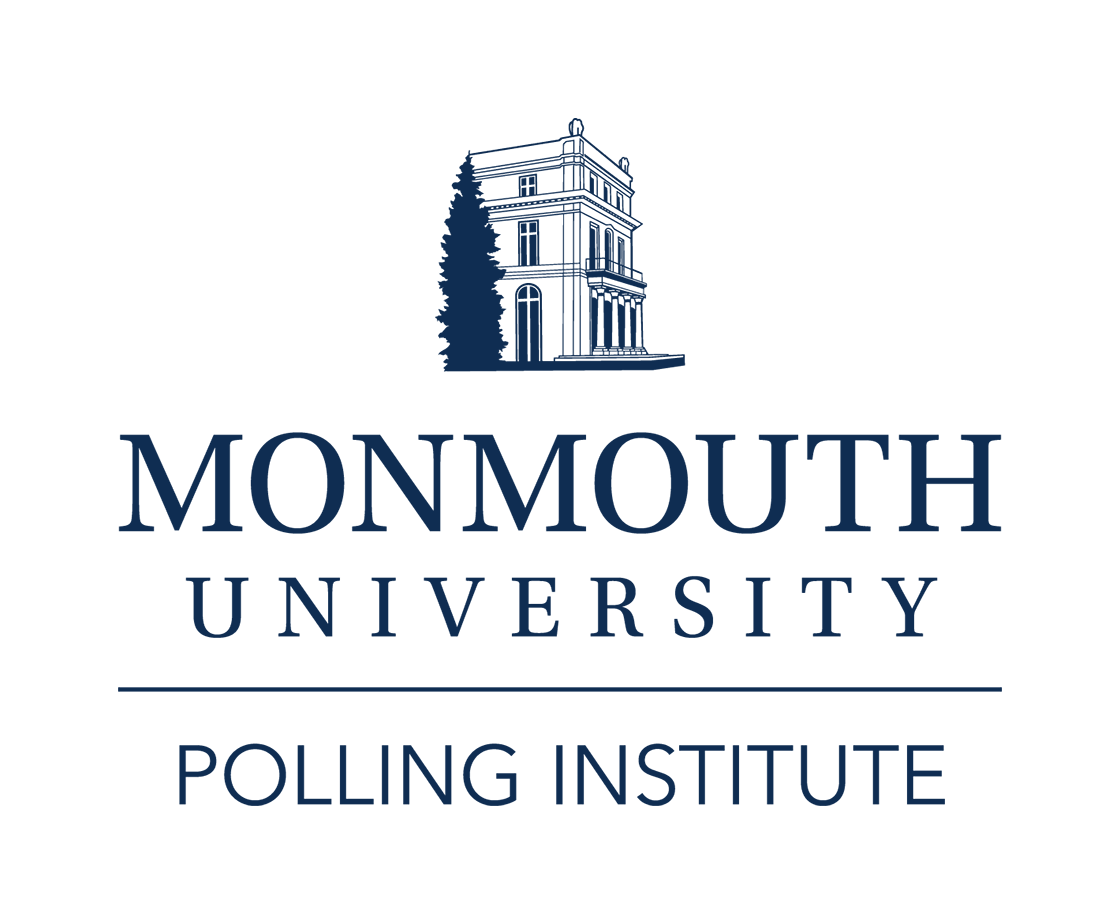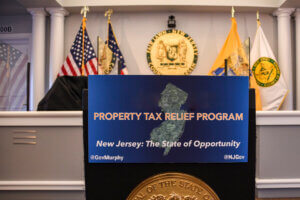It appears that the early presidential nominating contests have shaken up the primary picture here in New Jersey, especially for the G.O.P. According to the latest Monmouth University/Gannett New Jersey Poll taken after the Iowa caucuses and New Hampshire primary, Hillary Clinton now leads Barack Obama by 12 points among likely Democratic voters in New Jersey, which is down somewhat from the 19 point lead she held in October. However, the poll found an even larger shake-up on the Republican side, with John McCain now holding a slight 4 point lead over Rudy Giuliani. Just a few months ago, the former New York mayor held a commanding 32 point lead over the Arizona senator.
Among likely Democratic primary voters in New Jersey, Hillary Clinton currently claims support from 42% of voters, compared to 30% for Barack Obama, 9% for John Edwards, and 2% for Dennis Kucinich. Another 17% remain undecided. Support levels for Clinton, Edwards and Kucinich are nearly identical to what they registered in the October 2007 poll. However, Obama’s support has increased by 7 percentage points on the heels of his strong showing in Iowa and New Hampshire.
“Senator Obama’s early win in Iowa has swung some previously undecided New Jersey voters into his camp, but Senator Clinton’s support among rank and file Democrats here remains strong,” commented Patrick Murray, director of the Monmouth University Polling Institute.
On the Republican side, John McCain claims support from 29% of likely primary voters compared to 25% for Rudy Giuliani. McCain’s support in the Garden State G.O.P. race has increased by 17 points from 12% in October, while Giuliani’s has decreased by 19 points from 44% in the prior poll. Mike Huckabee has now moved into third place at 11% (up from 2%), Mitt Romney has 9% (similar to his prior 8%), Fred Thompson has 5% (down from 10%), and Ron Paul has 5% (up from 1%). Another 16% remain undecided.
Murray also said, “It appears that Mayor Giuliani’s strategy to ignore the early states may have taken him off the radar screen here. Many of his supporters have now moved to Senator McCain, which, ideologically, is probably an easy switch for New Jersey Republicans. Without a major win between now and Super Tuesday, Giuliani may have to spend precious resources in New Jersey simply to remind voters that he’s still in the running.”
The poll also asked all registered voters in the state – including those not voting in the upcoming February 5th primary – whether selecting a candidate who can bring about needed change or someone who has the right experience is more important to them in this year’s race for the White House. Overall, New Jersey voters are split – 39% are looking for change and 37% prefer experience. Another 18% volunteer that they value both qualities equally and 6% have no opinion. Democrats (41%) and independents (51%) are more likely to value change while Republicans tend to go for experience (53%).
|
NEW JERSEY PRIMARY VOTERS – IMPORTANT PERSONAL QUALITY | |||||||
|
|
|
|
|
|
|
|
|
| Democratic Primary Voters |
Clinton |
Obama |
Edwards |
Kucinich |
Other |
— |
Undecided |
| – Bring about change (45%) |
24% |
53% |
8% |
2% |
0% |
— |
13% |
| – Right experience (31%) |
66% |
8% |
10% |
2% |
3% |
— |
10% |
| – Both equally (20%) |
51% |
14% |
9% |
3% |
1% |
— |
22% |
|
|
|
|
|
|
|
| |
| Republican Primary Voters |
McCain |
Giuliani |
Huckabee |
Romney |
Thompson |
Paul |
Undecided |
| – Bring about change (27%) |
19% |
22% |
16% |
11% |
4% |
8% |
18% |
| – Right experience (51%) |
33% |
28% |
7% |
9% |
8% |
4% |
11% |
| – Both equally (18%) |
29% |
26% |
13% |
6% |
1% |
1% |
24% |
Among likely voters in the upcoming Democratic primary, 45% say they want a candidate of change and 31% want experience. Democratic voters who want change go for Obama over Clinton by 53% to 24%. Those who want experience choose Clinton over Obama by 66% to 8%.
Among likely Republican primary voters, 51% say they want a candidate with experience and 27% want change. Republican voters who prefer experience give McCain (33%) a slight edge over Giuliani (28%). Those who want change slightly prefer Giuliani (22%) to McCain (19%) or Huckabee (16%)
An analysis of key voter groups in each party’s primary indicates that turnout will be a major factor in deciding the ultimate outcome. In the Democratic race, the current poll shows Obama draining some support from Clinton among black and Hispanic voters – where Obama now leads by 48% to 26% – as well as more independent-minded voters – where the Illinois senator has a 44% to 27% advantage.
Among Republicans, Giuliani and McCain have swapped support among most demographic groups, but Giuliani’s biggest erosion of support has come from independent-minded Republican voters – down from 51% in October to 28% currently.
“It seems almost cliché to say that turnout will decide these contests,” said Murray. “However, New Jersey has not held a presidential primary that was in the thick of the race for at least a generation. On both the Democratic and Republican sides, 1-in-6 voters are still undecided. Moreover, the likely voter models show the surging candidates doing better with unaffiliated and soft partisan voters who normally don’t participate in primaries but may be prompted to go to the polls this year.”
While the New Jersey presidential primary races are still in flux, voter attitudes toward the impact of having an earlier primary have not changed since the date was changed. Currently, only 1-in-3 voters (36%) feel that moving up the primary has made the presidential candidates pay more attention to New Jersey issues. Half (50%) say it has had no impact and 4% say that the candidates are paying even less attention to the state. This view is unchanged from a poll conducted in April last year.
The Monmouth University/Gannett New Jersey Poll was conducted by telephone with 1,098 New Jersey registered voters from January 9 to 13, 2008. The total sample has a margin of error of + 3.0 percent. The margins of error for the two voting intention questions are ± 4.5% for the 475 likely Democratic primary voters and ± 4.9% for the 400 likely Republican primary voters. The poll was originally published by the Gannett New Jersey newspaper group (Asbury Park Press, Courier-Post, Courier News, Daily Journal, Daily Record, and Home News Tribune).
A note on the primary sample methodology:
Most New Jersey voters have not had the opportunity to vote in a competitive presidential primary due to the fact that the state’s contests have been held in June, after the eventual nominees had been all but determined. Turnout in the 2004 primary was 10% of all voters or about 22% of registered Democrats and Republicans. Turnout in 2000 was slightly higher at 17% overall, or 39% of registered Democrats and 35% of registered Republicans. However, the 2000 primary also included contested U.S. Senate races in both parties. Moreover, unaffiliated voters are able to declare with a party on primary day. As such, it is difficult to predict potential turnout for the February 2008 presidential primary. The sample used for this survey involved a random digit dial (RDD) sample of 698 registered voters plus an additional sample of 400 known past primary voters drawn from voter record lists. Subsets of likely voters for each party’s primary were asked the voting intention questions. Responses from the RDD and list-based samples were given equal weight for those questions.
DATA TABLES
The questions referred to in this release are as follows: (* Some columns may not add to 100% due to rounding.)
undefined. [ASKED OF LIKELY DEMOCRATIC PRIMARY VOTERS:] I’m going to read a list of people running for the Democratic nomination. After I read it, please tell me who you would vote for if the primary were held today. [Names were rotated]
|
Democrats |
Likely | Known Past Primary Voters Only |
GENDER | |
|
Male |
Female | |||
| Hillary Clinton |
42% |
42% |
39% |
44% |
| Barack Obama |
30% |
21% |
34% |
27% |
| John Edwards |
9% |
8% |
10% |
9% |
| Dennis Kucinich |
2% |
1% |
3% |
2% |
| (VOL) Other |
1% |
1% |
2% |
0% |
| Don’t know |
17% |
26% |
12% |
19% |
| Unwtd N |
475 | 200 | 198 |
269 |
| TREND: |
Jan. | Oct. 2007 |
April |
| Hillary Clinton |
42% | 42% |
41% |
| Barack Obama |
30% | 23% |
22% |
| John Edwards |
9% | 7% |
13% |
| Dennis Kucinich |
2% | 2% |
0% |
| Bill Richardson |
n/a |
1% |
2% |
| Joe Biden |
n/a |
2% |
3% |
| Chris Dodd |
n/a |
0% |
0% |
| Mike Gravel |
n/a |
0% |
n/a |
| (VOL) Other |
1% | 1% |
1% |
| Don’t know |
17% | 21% |
18% |
| Unwtd N |
475 | 478 |
451 |
2. [ASKED OF LIKELY REPUBLICAN PRIMARY VOTERS:] I’m going to read a list of people running for the Republican nomination. After I read it, please tell me who you would vote for if the primary were held today. [Names were rotated]
|
Republicans |
Likely |
Known Past |
GENDER | |
|
Male |
Female | |||
| John McCain |
29% | 32% | 31% |
27% |
| Rudy Giuliani |
25% | 19% | 24% |
27% |
| Mike Huckabee |
11% | 10% | 8% |
13% |
| Mitt Romney |
9% | 9% | 12% |
7% |
| Fred Thompson |
5% | 2% | 7% |
3% |
| Ron Paul |
5% |
5% |
6% |
3% |
| (VOL) Other |
0% |
0% |
0% |
0% |
| Don’t know |
16% |
22% |
11% |
21% |
| Unwtd N |
400 | 200 | 204 |
194 |
| TREND: |
Jan. | Oct. 2007 |
April |
| John McCain |
29% | 12% |
19% |
| Rudy Giuliani |
25% | 44% |
49% |
| Mike Huckabee |
11% | 2% |
1% |
| Mitt Romney |
9% | 8% |
6% |
| Fred Thompson |
5% | 10% |
1%* |
| Ron Paul |
5% |
1% |
n/a |
| Duncan Hunter |
n/a |
0% |
n/a |
| Tom Tancredo |
n/a |
1% |
n/a |
| (VOL) Other |
0% |
1% |
0% |
| Don’t know |
16% |
20% |
21% |
| Unwtd N |
400 | 411 |
402 |
[ * Fred Thompson was a voluntary response in the April 2007 poll]
3. [ASKED OF ALL REGISTERED VOTERS:] Which personal quality matters more to you in deciding who to support for president: someone who can bring about needed change or someone who has the right experience?
|
All | All Likely Primary Voters |
Known Past |
PARTY ID | |||
|
Dem | Ind |
Rep | ||||
| Bring change |
39% | 38% | 31% | 41% | 51% |
26% |
| Right experience |
37% | 38% | 40% | 32% | 29% |
53% |
| (VOL) Both equally |
18% | 19% | 23% | 21% | 13% |
18% |
| (VOL) Don’t know |
6% | 5% | 6% | 6% | 7% |
4% |
| Unwtd N |
1098 | 875 | 400 | 412 | 286 |
368 |
4. [ASKED OF ALL REGISTERED VOTERS:] As you may know, New Jersey moved up its presidential primary from June to February. Do you think having an earlier primary made the presidential candidates pay more attention to issues that concern New Jersey, less attention, or has it had no impact?
|
All | All Likely Primary Voters | Known Past Primary Voters Only |
PARTY ID | |||
|
Dem | Ind |
Rep | ||||
| More attention |
36% | 38% | 38% | 43% | 28% |
34% |
| Less attention |
4% | 4% | 3% | 3% | 4% |
5% |
| No impact |
50% | 48% | 45% | 42% | 61% |
53% |
| (VOL) Don’t know |
10% | 11% | 14% | 13% | 7% |
8% |
| Unwtd N |
1098 | 875 | 400 | 412 | 286 |
368 |
| TREND: |
Jan. 2008 |
April 2007 | ||
|
Registered | Primary Voters | Registered Voters |
Primary | |
| More attention |
36% | 38% | 37% |
42% |
| Less attention |
4% | 4% | 4% |
3% |
| No impact |
50% | 48% | 51% |
47% |
| (VOL) Don’t know |
10% | 11% | 8% |
8% |
| Unwtd N |
1098 | 875 | 1069 |
853 |
The Monmouth University/Gannett NJ Poll was conducted and analyzed by the Monmouth University Polling Institute research staff. The telephone interviews were collected by Braun Research on January 9-13, 2008 with a statewide random sample of 1,098 registered voters. For results based on the total sample, one can say with 95% confidence that the error attributable to sampling has a maximum margin of plus or minus 3.0 percentage points. The sample used for this survey involved a random digit dial sample of 698 registered voters plus an additional sample of 400 known past primary voters who were drawn from voter records. Sampling error increases as the sample size decreases, so statements based on various population subgroups, such as separate figures reported by gender or party identification, are subject to more error than are statements based on the total sample. In addition to sampling error, one should bear in mind that question wording and practical difficulties in conducting surveys can introduce error or bias into the findings of opinion polls.
Click on pdf file link below for full methodology and results by key demographic groups.




